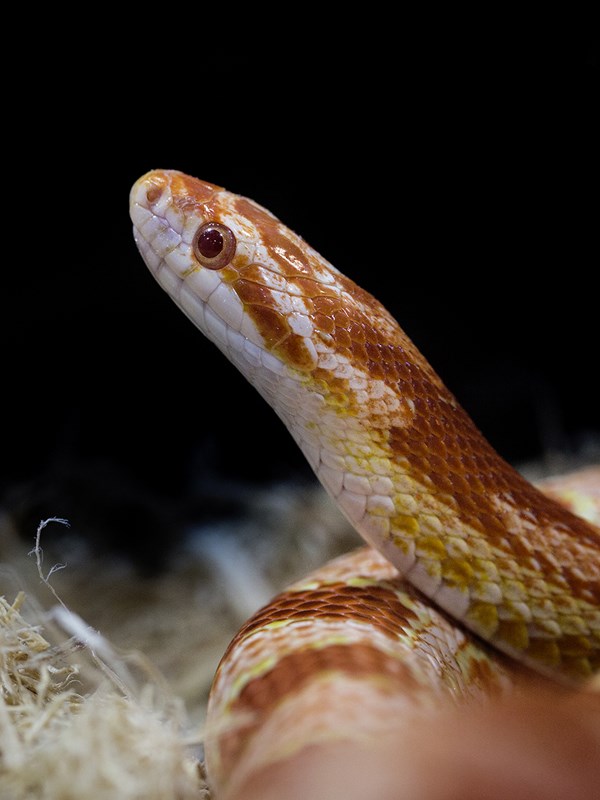
Corn Snake
Scientific Name Pantherophis guttatus
Native To Southeastern United States
Habitat Pine barrens, wooded areas, and hillsides
Diet Carnivorous: small lizards, frogs, birds, mice, and other small mammals
Size and Age Average length of 45-112 cm (18-44 in); average lifespan of 12-25 years
Natural History
Corn snakes, also referred to as red rat snakes, are a constrictor type snake—meaning they wrap their bodies around prey and squeeze them to death before consumption. They are often found in cornfields, searching for corn eating rodents. Originally, it was thought that these snakes actually ate corn, which is where they got their name. Commercial breeders of domesticated corn snakes have developed hundreds of variations, or morphs, through selective breeding.
Least Concern

Conservation Status
Although these snakes are non-venomous, they have been known to bite and vibrate their tails when threatened. Sadly, corn snakes are often mistaken for copperhead snakes and killed in the wild. The two species can be identified apart by their markings; copperheads have hourglass markings, whereas a corn snakes' markings are blotchy and random.
Interesting Facts
- Corn snakes can angle their scales outward away from their bodies, to catch and dig into rough tree bark, enabling them to climb trees.
- A possible reason for their name is the distinctive pattern on the underside of the snake, which strongly resembles maize corn.
- This species is one of the world’s most commonly kept reptiles.
- Males will compete for mating rights by shoving-up against one another to win over a female.
